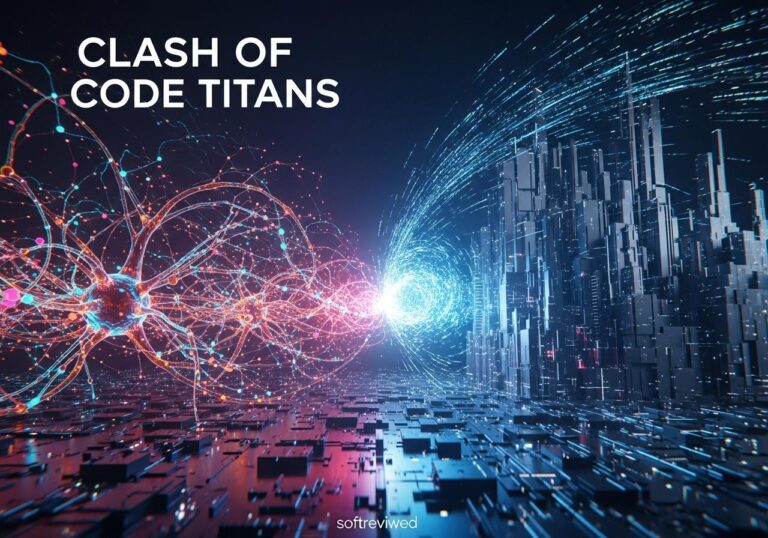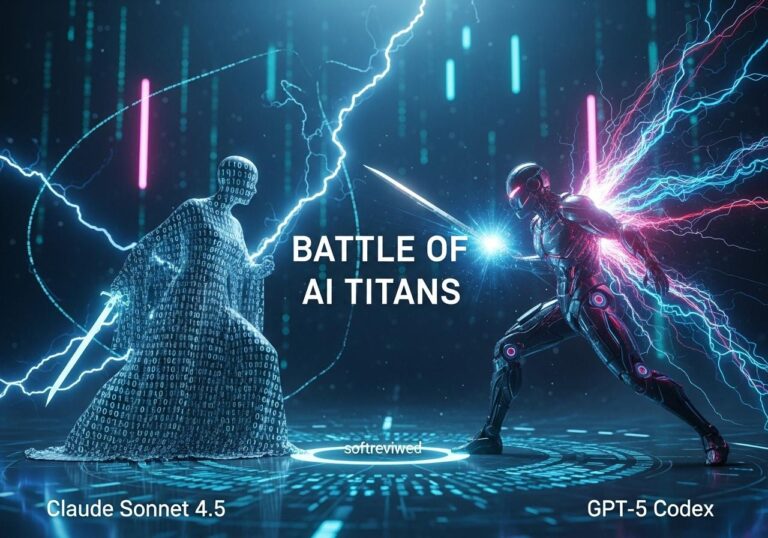Amazon Nova Act: Revolutionizing AI Automation
Amazon’s powerful browser automation technology brings agentic AI to enterprises and consumers, enabling seamless web interactions and workflow automation.
Autonomous Browser Tasks
Amazon Nova Act enables autonomous browser tasks like shopping, itinerary planning, and form completion through AI agents. These agents can navigate complex web interfaces and complete multi-step workflows without human intervention, making everyday online tasks more efficient.
Developer SDK
The comprehensive Developer SDK provides tools to build reliable multi-step workflows, APIs integration, and browser automation via Playwright. Developers can create custom AI agents that interact with websites and applications in a human-like manner, ensuring robust performance across different web environments.
Superior Performance
Nova Act outperforms rivals (Claude 3.7 Sonnet & OpenAI’s Computer Use Agent) in UI interaction benchmarks for dates, dropdowns, and visual elements. Its advanced perception capabilities allow for accurate interpretation of complex web interfaces, resulting in higher success rates for automated tasks.
Alexa+ Integration
Nova Act powers Amazon’s Alexa+ upgrade, bringing agentic AI to millions of users for hands-free web interactions. Users can now ask Alexa to complete complex online tasks like booking flights, ordering groceries, or researching products, all through natural voice commands.
Enterprise Focus
Nova Act targets enterprise automation, emphasizing secure containerized workflows for business-critical tasks. The platform provides a sandboxed environment for AI agents to operate safely, making it ideal for sensitive business operations while maintaining compliance with security standards.
The artificial intelligence landscape is constantly evolving, and Amazon's recent launch of Nova Act, a new AI agent capable of operating within web browsers, has certainly turned heads. This isn't just another chatbot; it's a significant step towards autonomous AI that can perform tasks on your behalf. With this launch, Amazon is directly challenging established players like OpenAI and Anthropic, intensifying the competition in the rapidly advancing field of agentic AI. This article will explore the capabilities of Amazon's Nova Act, examine its position against key competitors, and delve into the potential implications of this technology.
What Exactly is Nova Act, and Why Should You Care?
Nova Act is not your everyday AI. It's an AI agent designed to navigate and interact with web content autonomously. Imagine a digital assistant that doesn't just answer questions but can actively perform tasks online, from shopping for products and comparing prices to filling out forms and managing your calendar. This is the promise of Nova Act, and it could drastically alter how we interact with the web. 🌐
Deconstructing the Nova Act: How It Works
Unlike other AI agents that might require constant human supervision, Nova Act is designed for greater autonomy. It allows developers to break down complex workflows into a series of single, manageable acts, such as searching, adding to a cart, or checking out. These acts can be strung together, allowing for the completion of more complex tasks, as well as being paired with conditional instructions (e.g., "don't accept the upsell"). This is achieved through the Nova Act SDK, available to developers through nova.amazon.com, and is designed to help build agents that can “have the same intuitions about UI elements” that humans do. 🤖
Beyond Simple Chat: Real-World Tasks Nova Can Handle
Nova Act is capable of completing real tasks on the web, effectively mimicking human browser activity. Imagine the possibilities:
- 🛒 Online Shopping: Search for products, compare prices, add items to your cart, and even complete the purchase.
- 📅 Scheduling: Book appointments, update your calendar, or submit time-off requests.
- 📝 Form Filling: Automatically fill out online forms, saving time and reducing the chance of errors.
- 🔍 Research: Conduct online research, compile information, and present it in a structured format.
- ✈️ Travel Planning: Search for flights and hotels based on your preferences.
This ability to take action is a crucial distinction from traditional chatbots, marking a leap towards true AI assistance.
Amazon's AGI Ambitions: The Team Behind Nova Act
The development of Nova Act is spearheaded by Amazon’s Amazon AGI San Francisco Lab, which is also responsible for the Amazon Nova foundation models. The team, led by David Luan (a former OpenAI VP and Google Research director), and Pieter Abbeel, demonstrates Amazon's serious commitment to advancing the field of AI. 🧠
The AI Agent Arena: Nova Act vs. The Competition
Amazon is not alone in the race to develop capable AI agents. Competitors like OpenAI and Anthropic have also released similar tools, creating a vibrant, competitive landscape. Let's take a look at where Nova Act stands.
The Battle of the Browsers: Nova Act vs. OpenAI's Operator
OpenAI's Operator is another notable AI agent that, similar to Nova Act, can perform tasks on the web. Operator uses its own browser and can interact with webpages by typing, clicking, and scrolling. Some examples of tasks Operator can do include:
📌 Completing online forms
📌 Grocery shopping
📌 Planning vacations
Nova Act aims for greater autonomy with the user being able to break down complex workflows into discrete steps. While Operator focuses on broader task automation, Nova Act allows developers to build more autonomous and reliable agents by allowing more specific and conditional instructions. In contrast, the opera browser ai agent offers seamless integration within the browsing experience, enhancing productivity by managing multiple tasks simultaneously. This capability sets it apart in terms of efficiency when handling routine online activities, making it a valuable tool for users looking to streamline their digital interactions. As both technologies evolve, their distinguishing features will provide users with unique options tailored to their specific needs.
Anthropic's 'Computer Use' and How Nova Act Stacks Up
Anthropic, backed by Amazon, introduced a tool called "Computer Use" that is capable of interpreting what’s on a computer screen, selecting buttons, entering text, and navigating websites. This tool also has real-time internet browsing functionality. Nova Act’s differentiating factor lies in how it structures tasks, breaking them down into smaller actions with conditional components and this approach aims for more robust autonomy and reliability.
A Quick Glance at the Competitors
| Feature | Amazon Nova Act | OpenAI Operator | Anthropic 'Computer Use' |
|---|---|---|---|
| Approach | Modular, autonomous, task breakdown | Broad task automation | Screen interpretation & interaction |
| Focus | Reliability and conditional steps | Task completion | Web & software interaction |
| Key Difference | Fine-grained task control, reliability | Broad task automation | Direct software & webpage interaction |
Beyond Capabilities: A Look at Cost and Efficiency
While capabilities are essential, cost and efficiency are also key factors. Amazon's Nova models have shown significant promise in these areas. As a recent benchmark study found, Amazon Nova Pro outperformed OpenAI's GPT-4o in efficiency, operating 97% faster while being 65.26% more cost-effective. The study also found that the Amazon Nova Micro and Lite models outperformed GPT-4o-mini in terms of both accuracy and affordability. ✅ These cost savings can have huge implications, making powerful AI more accessible for a wide range of users.
How Can AI Tools Like ChatGPT Enhance the Use of Nova Act for Web Browser Automation?

AI tools like ChatGPT can significantly enhance the use of Nova Act for web browser automation by providing intelligent responses and suggestions during coding tasks. With chatgpt as study partner, users can quickly troubleshoot issues, learn best practices, and optimize their automation scripts, making the entire process more efficient and effective.
Why is Amazon Investing So Heavily in AI Agents?
Amazon's push into AI agents reflects a broader strategy to integrate AI into its core business. By creating more powerful AI tools, Amazon is aiming to enhance its existing services, while also empowering developers to build new and innovative applications.
Building Blocks: The Nova Foundation Models
The foundation of Nova Act is built upon the Amazon Nova foundation models, which are a set of versatile AI models designed for different purposes. These models include:
- Nova Micro: A streamlined, text-only model for fast, low-cost applications.
- Nova Lite: A multimodal model capable of processing text, images, and videos, ideal for complex analysis and question-answering.
- Nova Pro: A high-performance model for complex reasoning and analysis of text, images, and videos.
- Nova Canvas: A cutting edge image generation model that creates high quality images.
- Nova Reel: A state-of-the-art video generation model that generates stunning videos.
These models are available through both the new website, nova.amazon.com, as well as being integrated into Amazon Bedrock.
Amazon Bedrock: A Platform for AI Innovation
Amazon Bedrock is a fully managed service that provides access to a variety of foundation models, including Amazon's own models and those from other leading AI companies. 🔗 This platform allows developers to easily experiment with and deploy AI solutions, including agents like Nova Act. You can learn more about Amazon Bedrock on its official page. Bedrock offers an easy way to privately customize AI models with proprietary data using techniques like fine-tuning and Retrieval Augmented Generation (RAG). This enables the user to build agents with an understanding of their business data.
The Road Ahead: What's Next for AI Agents and Nova Act?
The release of Nova Act is not the end of the story, it’s just the beginning. As AI technology advances, we can expect:
- 🚀 More sophisticated agents: Future agents will likely have even greater autonomy and capabilities, handling more complex tasks with less human intervention.
- 🛠️ Integration with other technologies: Seamless integration of AI agents with other systems (e.g., IoT devices, robotics) will create more dynamic and interconnected solutions.
- 🤔 Enhanced reasoning abilities: Agents will get better at understanding context, making decisions, and learning from their experiences.
These future developments promise to further blur the lines between human and AI interaction.
The Agentic Era: A New Chapter in AI
The arrival of AI agents like Nova Act marks the beginning of a new era in AI. This technology has the potential to transform how we interact with computers and the internet, creating more efficient workflows and paving the way for autonomous systems that can assist us in more impactful ways. While still in its early stages, the potential impact of agentic AI is undeniable. As more companies invest in and develop this technology, we can anticipate even more progress in the near future.
Amazon Nova Act Performance Benchmarks
This chart compares Amazon Nova Act’s benchmark performance against competitors Claude 3.7 Sonnet and OpenAI CUA across key browser automation tasks.







